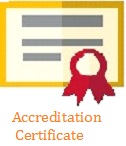The Changes of Earthworm Population and Chemical Properties of Tropical Soils under Different Land Use Systems
Abstract
Hilly area Sumberjaya, West Lampung Province, South Sumatra, Indonesia, is one of the Province where deforestation increasing in the past 30 years as a result of the implementation of agricultural systems, especially coffee plantation. it is important to study the soil fauna in these natural relicts. Six sites (3 naturals and 3 managed systems) were studied in order to identify earthworm species communities, using the hand sorthing method and soil chemical parameters (pH, avail-P, org-C., tot-N, and cation exchange capacity (CEC). Two species were found (Pheretima sp. and Pontoscolex sp.). All land use systems had very similar soil chemical characteristics, there can be characterised as acidic (pH between 3.6 and 5.0). A high content of organic carbon was in natural sites (bush 4.0 % and primary forest 3.9 %), and a low content was in managed sites (coffee plantation 2.1 %). Total nitogen (0.37 %) and CEC (21.84 Cmol-c kg-1) was in primary forest. However, the earthworm densities were significantly lower under primary forest than in the other sites. The acidity component explained mainly the lowest earthworm population at the primary forest (soil pH 3.6). The use of succession forest (bush) and mix farming showed a positive effect on soil fertilit.
Keywords
Earthworm; landuses; soil fertility
Full Text:
PDFDOI: http://dx.doi.org/10.5400/jts.2008.v13i2.131-137
Refbacks
- There are currently no refbacks.
INDEXING SITE
This work is licensed under a Creative Commons Attribution 4.0 International License.

















